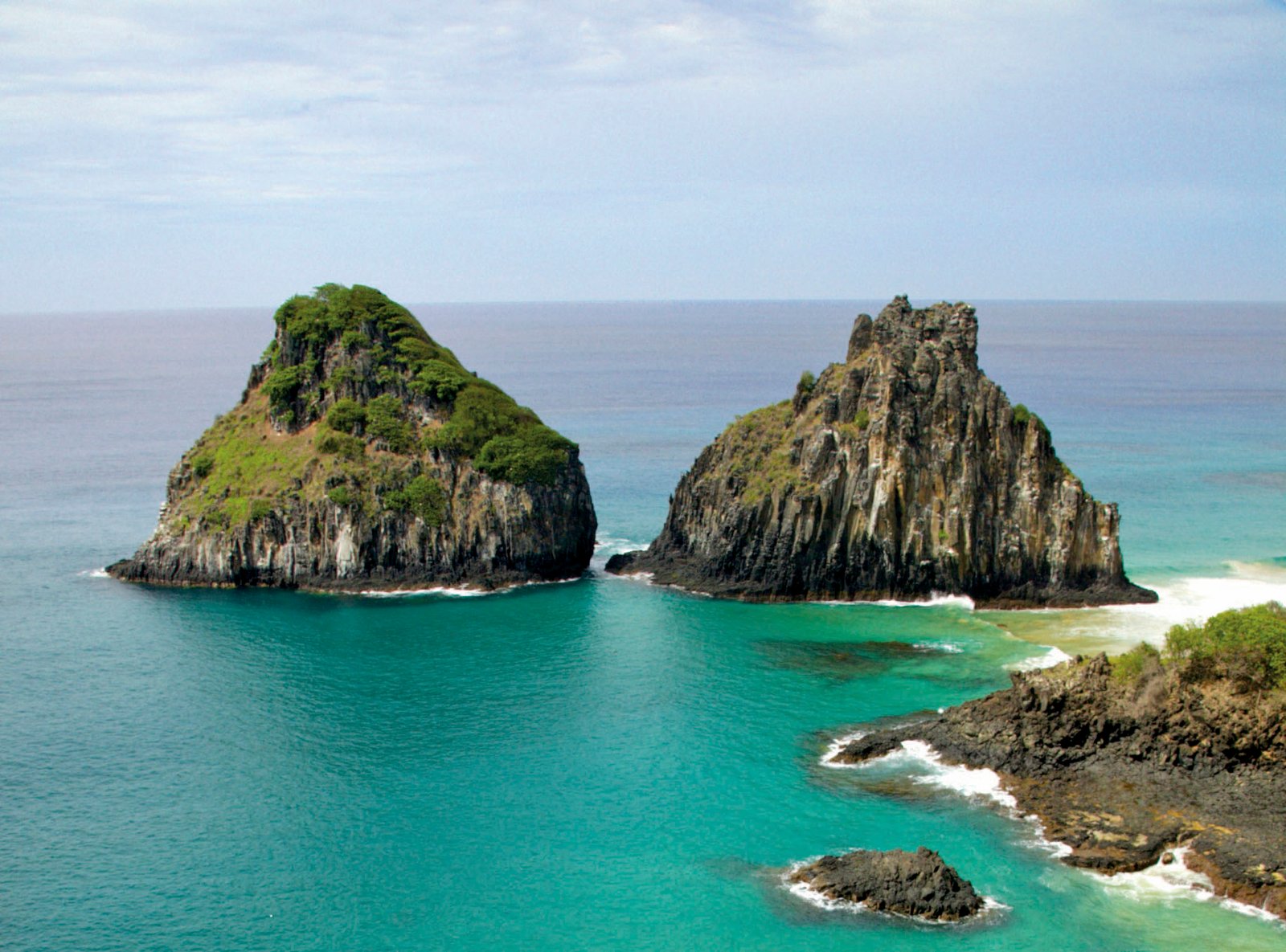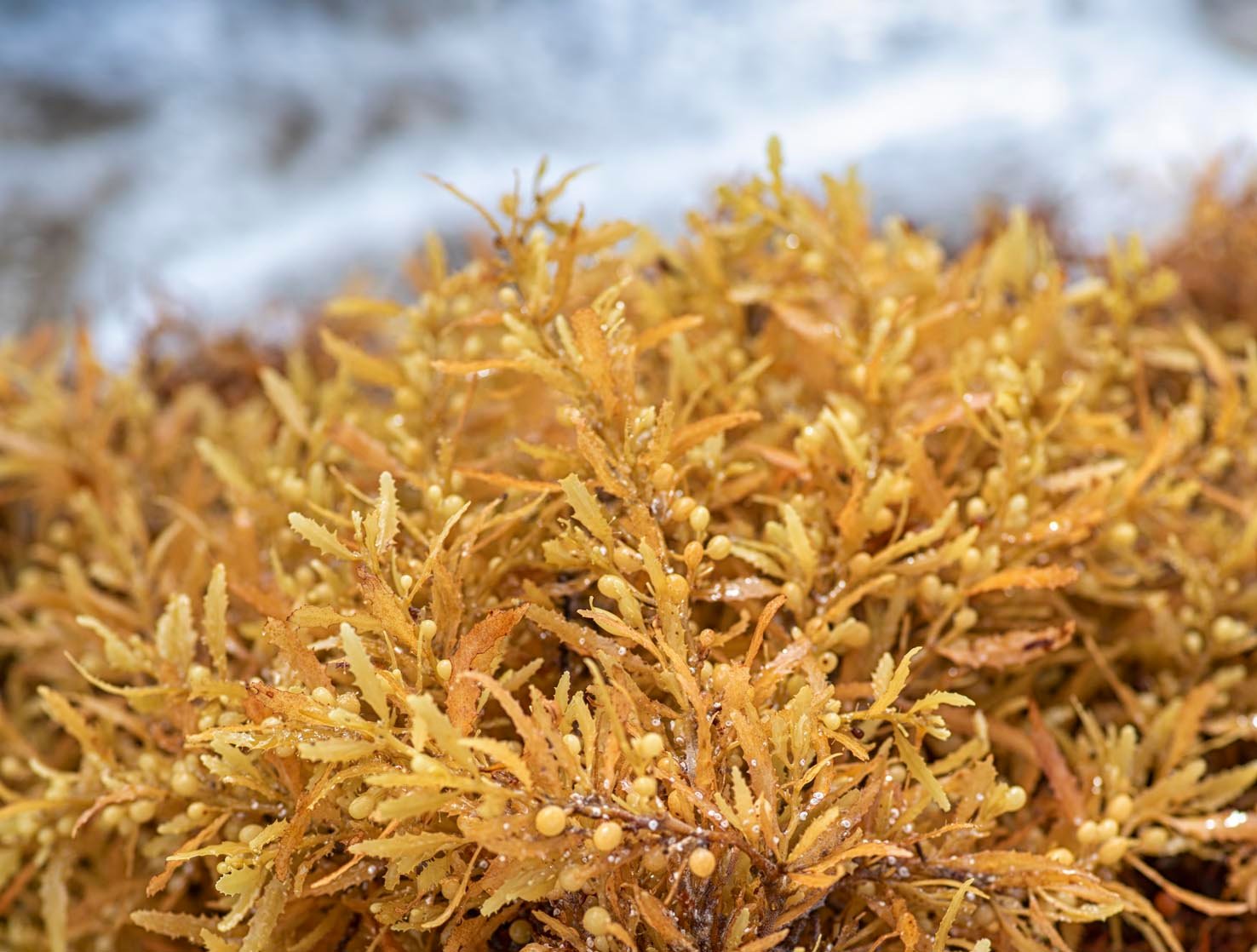
Fernando de Noronha: Reflections on Lost Paradises and Enraptured Tourists
Por: Juan Abelardo Carles R.
Fotos: Luis Eduardo Guillén
One of the best parts of a career in travel journalism is that every assignment is an experience of discovery, so I trust that my readers will pardon me when I confess that before being invited to visit, I had no idea the Fernando de Noronha archipelago even existed. Nevertheless, my friends from the Brazilian state of Pernambuco (which administers the islands) reacted incredulously to my claim that I knew nothing about this chunk of earth and greenery located in the middle of the equatorial Atlantic, closer to Africa than São Paulo. The mere mention of the islands makes any Brazilian go dreamy-eyed and rapturous, as if we were talking about Shangri-La.
It takes about an hour to fly from Recife, the capital of the Brazilian state of Pernambuco, to the airport on the main island, Fernando de Noronha, which is also the name of the entire group of islands. After nearly hypnotizing myself watching the dynamic, iridescent Atlantic waters, the first finger of island land appeared unexpectedly, almost shockingly, and before I finished processing the change of scenery, the aircraft was touching down. The island’s air terminal is small, not at all like a typical “resort” with huge hotels and symmetrically spaced palm trees, where nature is merely a backdrop for a golf course or a marina.
Here, nothing is allowed to disturb the ecological balance. The government of Pernambuco (which administers the islands) permits no more than 3,000 people on the islands at any one time, so visitors must meet certain requirements and wait for a travel date. Fines for harming animals or plants are astronomical and even if they weren’t, the environmental awareness of the visitors here is so high that surfers prefer to jump off their boards rather than hit a turtle when they are riding the waves.

None of this presents difficulties for anyone, not even the famous Brazilian and international jet set, which has made Fernando de Noronha its ideal escape from the pressures of celebrity.
The first notable person to visit the islands may have been Amerigo Vespucci in 1503, at the dawn of the discovery of the New World. Portugal, France, and Holland disputed the islands for decades, until Portugal finally managed to lay claim to them in 1654. From that time until well into the 20th century the islands served as a penitentiary. To prevent any other power from using the islands as a launching pad for invading its South American colonies, Portugal surrounded the main island with forts, the ruins of which can still be seen.
The ruins of Fort São Pedro do Boldró are very popular, and they provide a wonderful opportunity to visit Ilha Dos Irmaos to the west and Morro do Pico to the east, as well as the vast Praia dos Americanos under the cliff on which the fort is built. In fact, Boldró was our first stop on our trip to Noronha, where we arrived just in time to witness a spectacular sunset. Our guide tried to sell us on the romantic idea that the two cliffs of Ilha Dos Irmaos look like a woman’s breasts, but it requires a great deal of imagination to associate those steep, craggy formations with the soft, rounded contours of a woman. Our guide’s efforts were further stymied by the arrival of a van full of models of both sexes who came to film a commercial. The models began dancing to deafening electronic music that drowned out the symphony of waves, wind, and birds that had been lulling us.

The rock cavies leaping among the fort’s fallen stones don’t seem bothered by the noise. These rodents were brought here by the Brazilian military in 1988 as hunting targets and their population quickly grew beyond human control. As one of those “brilliant” ideas implemented by humans in natural environments, the prison’s administrators introduced the tejú azú, a robust saurian, halfway between an iguana and a crocodile, in the vain hope that they would feed on the mocós. But the tejús turned out to be lethargic in the hot sun, unlike the mocós, who agilely jump and run. Tejús occasionally manage to sink their teeth into the flanks of one of the rodents, but generally only if the rodent is very young, very old, or sick. Since one can’t eat the other, both species have chosen to ignore each other, thus spoiling the human experiment in ecological manipulation.
This does not mean that the island lacks biological diversity. On the contrary, it presents the unusual endemism found in isolated ecosystems, including animals like the Fernando de Noronha lizard (which, unfortunately for it, is eaten by the tejú), the Noronha vireo, the worm-lizard, and a unique crab seen only on these islands, as well as more than forty species of birds (many of them migratory), and spectacular marine life that can only be seen on offshore dives.
Rise at dawn and observe any beach, Leão, for example. The beach is known as an egg-laying site for several species of turtles, and although we don’t see any turtles upon arrival, we do spot several in the distance, silhouetted against the tenuous light of dawn as they fight the waves. At Baia do Sancho, we were able to look down from the 131-foot high cliffs at schools of small fish circling swimmers enjoying the beach. If marine life is so easily visible from land, what would it look like from the water?

We went to Praia do Sueste to find out. The mouth of this inlet is dotted with several islets, such as Ilha Cabeluda, Ilha do Chapéu do Sueste, Ilha dos Ovos, and Ilha Trinta-Réis. The islets keep the waters calm and ideal for diving. As long as they respect the markers placed by the island authorities to protect the environment, divers can see an incredible variety of colors and shapes moving through the blue waters of Noronha. Not even the hints of claustrophobia induced by the diving mask kept me from jumping into the water to enjoy the spectacle that peaked with a face-to-face meeting with a giant green turtle. I could not help touching its shell several times, an impertinence the amiable beast allowed for several minutes before retreating to less crowded patches of algae.
So much wealth of biodiversity is protected by several scientific initiatives focused on research and conservation, like the TAMAR project, which is intended to protect several species of turtles that mate and lay eggs in and around the archipelago. There is also the NAVI project —a for-profit undertaking— that gives visitors the excitement of feeling like they are participating in a science experiment. NAVI uses an identically named vessel, the hull of which boasts a powerful underwater exploration lens —originally developed for military use— to provide visibility at more than three hundred feet under water. Tourists are given a logbook in which they note the weather conditions and the marine environment, and then list the marine species they see. And they will see many. I still have the log proving that I saw green turtles, shoals of rays and dolphins, and more than ten other species, all in slightly over an hour.
As if this natural wealth were not enough, Fernando de Noronha also offers interesting historical attractions, beginning with the unofficial capital of Vila dos Remédios, which appears in accounts from as early as 1629. This was the administrative center of the former prison.
The seat of the island’s military government was built on the ruins of the old prison offices in 1948. The interior preserves part of the walls of the original colonial construction, as well as valuable paintings and a stained glass window depicting San Miguel (St. Michael), patron saint of armies, who also gave his name to the Palacio de San Miguel, now housing the civil administration.

Vila Dos Remédios was built on a slope that runs down toward the Praia do Cachorro, so cars must ascend and descend in first gear. A charming church dedicated to Our Lady of Remedies, patron saint of the archipelago, also stands near the Palacio. The small, ancient church was finished in 1772, and the façade boasts the refined flourishes of Portuguese colonial baroque. The building was last restored in 1988. It is believed that some of the colonial liturgical accouterments disappeared during the archipelago’s successive military administrations, leaving the interior of the church, in contrast with the exterior, rather stark and simple. Other architectural treasures include the ruins of the nearby Fort of Our Lady of Remedies, as well as the old prison offices (warehouses, school, infirmary, and others).
People seem to think that a place like this has no night life, but Noronha hides a couple of surprises. There are excellent dining options, like the Pousada Maravilha’s signature cuisine, and the splendid buffet at Pousada Zé María, personally supervised by Zé María, who turns the dining experience into a big party of friends. After a generous meal, it’s not a bad idea to head for the Bar do Cachorro for individual instruction in forró, the sensual dance typical of the Brazilian northeast, taught by many eager local instructors of both sexes; you’ll dance away every last calorie you ate just a few hours earlier.
Dancing forró in Noronha was the frosting on the cake for me: burning so many calories erased the only feeling of guilt produced by my visit to these beautiful islands. Everything else was perfect, and even though the phrase “the best kept secret” is a metaphorical crutch for writers, I cannot think of a better way to describe this tiny paradise that roguishly winks at us from mid-ocean. The air still holds a tang of salt as the plane takes off and leaves Fernando de Noronha behind in a heartbeat. I sink into my seat and close my eyes to help me remember everything I experienced over the last few days, and almost without realizing it, my smile grows into the same dreamy expression I saw on the faces of my Brazilian friends.
www.noronha.pe.gov.br



